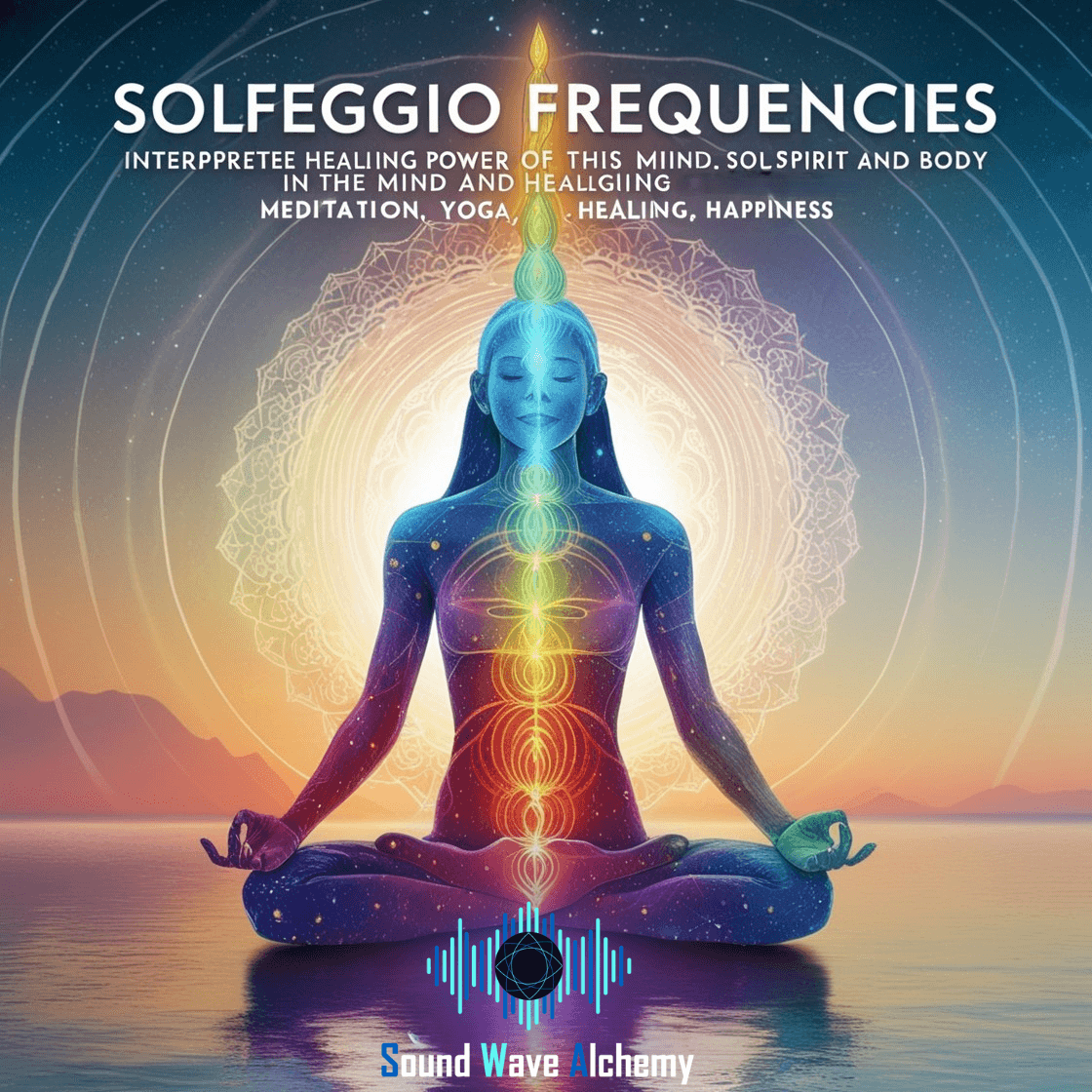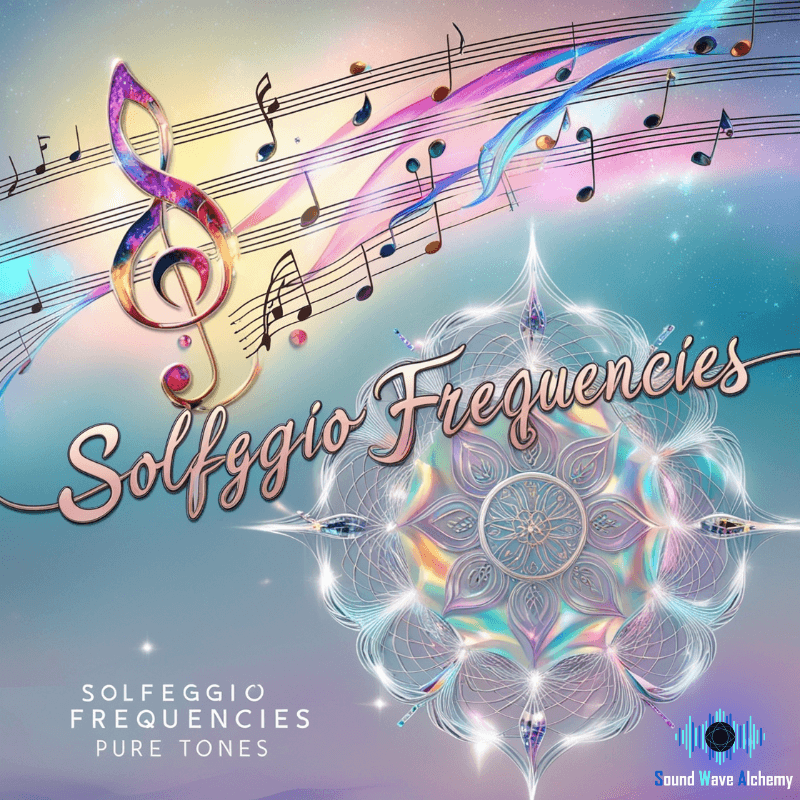🧠 Recommended Gear for Manifestations, Sleep & Deep Listening
-
 Sony WH-1000XM6 – Meditation & Travel Headphones
Sony WH-1000XM6 – Meditation & Travel Headphones
Top-tier noise canceling, clarity & comfort. Great for deep focus, meditation, or travel.
$448.00 -
 Sunrise Alarm Clock, Sound Machine, Smart Light (Putty)
Sunrise Alarm Clock, Sound Machine, Smart Light (Putty)
Create a relaxing bedtime & wake-up ritual with light therapy & white noise.
$169.99 -
 Retrospec Sedona Zafu Meditation Cushion
Retrospec Sedona Zafu Meditation Cushion
Ergonomic yoga pillow filled with buckwheat hulls — perfect posture, grounded energy.
$26.99
I. Introduction

Everyone knows that all things vibrate at their own frequency, from the smallest particles in an atom to galaxies. Our bodies as living organisms are included. The latest science has confirmed that each cell, organ, and system in our bodies vibrate at a specific frequency and that maintaining coherence among these frequencies is vital for our wellness.
So, what exactly are our natural frequencies and how can we use this information to promote health and healing? Let’s tap into the symphony of the human body frequency and discover how we can tune into its rhythms for optimum fitness.
II. The Human Body Frequency
Imagine, our whole electromagnetic field surrounding and permeating our physical body as a celestial choir. This orchestra that human body frequencies plays between 62-68 Hz; a harmonic melody that represents a balanced mind-body-spirit relationship. By staying within this range one gets to tune his/her instrument to the optimum pitch with less stress, more energy, and an improved immune system.
Also, it is believed that being one with the Earth’s natural background frequency of 7.83Hz known as Schumann resonance helps us maintain our healing vibrational frequency like two instruments making harmonious tunes together.
⭐️⭐️⭐️⭐️⭐️ (4.3/5)
Perfect support for your meditation and relaxation moments.
Just $189.99
🪑 Relax & Buy NowIII. Organ Frequencies
Each organ plays its unique melody as the whole system moves inside. For instance, in our bodies, the heart generates the most powerful electromagnetic field whose frequency is usually between 72-78Hz when it is healthy. The lungs seem like gentle flutes resonating frequency around 108Hz whereas the liver hums a deep low pitch of about 28-40Hz. The connection between emotions and the gut can be seen in the gastrointestinal system which produces complex music within a range of 36-44Hz reflecting the intricate connection between our gut and our emotions. And our kidneys produce sounds like high-pitched cymbals at an average rate of 118–122 Hz when functioning at their best.
| Organ | Frequency |
| The Heart | 72-78Hz |
| The Lungs | 108Hz |
| The Liver | 28-40Hz |
| Gastrointestinal System | 36-44Hz |
| The Kidneys | 118-122Hz |

Harmonize and align your chakras with the healing tones of the Solfeggio scale.
Ideal for deep meditations and vibrational realignment.
$249.99 $96.69

A pure, powerful collection of Solfeggio frequencies to support healing, energy work, and spiritual balance.
Great for therapists and sound healers.
$249.49 $72.96
IV. Cellular Frequencies
Even cells themselves communicate through frequencies too. A regular vibration of approximately 8 Hz characterizes red blood cells which are just like small drums beating life into one’s veins. The immunity-providing white blood cells have oscillatory movements around 10Hz thereby reflecting their vigilance-promoting quality. Additionally, depending on whether we are awake or asleep or even meditating deeply brain waves undergo cycles ranging from – beta, alpha, theta, and delta – states just as a conductor’s baton does.
Scientists suggest that having all cellular communication balanced at proper levels aids in cell health, renewal, and growth just as a well-tuned orchestra creates harmonious powerful music.
V. Tissue Frequencies

Breaking it down further to the individual organs, each of them has tissues that have their melodies. Muscle tissues sing a powerful chorus at 33-39Hz but the bones conduct low frequencies between 100-200Hz as though they were a bass drum with a deep rumble. Our DNA, which is the blueprint of life itself, is believed to function through specific torsion wave frequencies in the gigahertz range thus speaking volumes about its intricate beauty and complexity. Water alone comprises over 75% of the human body and is thought to possess soundwave memory exhibiting various structures resembling an ocean filled with numerous songs.
VI. Frequency Imbalances and Health Conditions
In conclusion, a healthy human being vibrates systemically at frequencies ranging from 62-68 Hz with each organ, tissue, cell, or system acting like finely tuned harmonics of this universal music in operation. But what happens when we fall out of tune?
For instance, modern research links frequency imbalances to some diseases. For instance, a heartbeat frequency below 58 Hz has been associated with impending cardiac arrest just as a faltering drum beat indicates loss of rhythm. Frequencies outside the normal range for lungs have indicated asthma and pulmonary disease such as discordant flute that cannot find its melody. And DNA damage has been observed outside its optimal frequency bandwidths, like a corrupted score leading to a disharmonious performance.

🎵 The 9 Solfeggio Frequencies – Pure Tones
Royalty-free, clean Solfeggio tones for healing, energy work, and spiritual alignment. A deep sound journey through all 9 sacred frequencies.
$249.49 $72.96
VII. Re-balancing The Human Body Frequencies and Restoring Wellness

The bright side is that we have tools to help restore wellness through frequency re-balancing like tuning forks and skilled musicians harmonizing the orchestra. Sound therapies with tuning forks, singing bowls, or electronic frequency generators can focus on specific organs or systems and bring them back into tune. For example, acupuncture meridian points are related to different frequencies that may be tuned up such as acupuncturists adjusting the strings of our internal instruments.
You can also help re-balancing your frequencies listening to the Solfeggio Frequencies Music, these frequencies resonate with our chakra, nature and space in a divine harmony. Found as the best frequency for human body.
Furthermore, it is believed that some herbs, foods, essential oils, and supplements possess frequency signatures that are beneficial for the body. And practices such as yoga, meditation, and deep breathing can help control our brain waves and reduce stress which is a major cause of frequency dysregulation in our bodies – it’s calming the mind so that the music within will begin to flow freely.
Enjoy this Playlist of the full Solfeggio Frequencies Meditation Offred By Cosmic Way Meditation
VIII. Conclusion
Viewing our health through the lens of vibration offers us a powerful model for understanding how all the different complex systems in our body communicate and interact like understanding the complicated interplay among various sections of an orchestra. It also provides actionable ways for us to support self-care, healing, and wellness by maintaining harmony among our frequencies similar to how a conductor guides his orchestra in its most beautiful and powerful delivery.
The future of medicine may increasingly focus on precisely modulating the body’s natural frequencies using sound, light, and other modalities, like a skilled composer creating new and innovative melodies to enhance the symphony of life.
For now, simply being mindful of living and working within our optimal bandwidth of 62-68Hz can help keep our personal symphony flowing at its beautiful best, like a well-tuned instrument playing its part in the grand orchestra of life.

Brainwave-tuned audio for deep meditation, alignment, and inner calm.
A perfect tool for high-vibe self-healing.
$249.49 $24.00

Pure pulsing tones to re-center your focus and balance your energy field.
Royalty-free for use in personal or healing work.
$149.99 $36.69
FAQ: Healing Frequencies of the Human Body
What are the healing frequencies of the human body?
The human body is a complex system of organs, tissues, and cells, each vibrating at its own unique frequency. These frequencies are believed to play a role in our overall health and well-being. Some specific frequencies have been associated with healing and regeneration, including:
- 528Hz: This frequency is known as the “Love Frequency” and is believed to promote relaxation, reduce stress, and synchronize brainwaves for a smooth transition into sleep.
- 417Hz: Resonating with the Sacral chakra, this frequency fosters feelings of safety, comfort, and self-love, creating a calming environment for letting go of worries.
- 639Hz: This tone releases mental tension, anxiety, and fear-based physical holding patterns, Connecting with the Heart Chakra, its promote self love, true love and compassion further preparing both mind and body for deep sleep free from guilt and hatred.
- 285Hz: Activating the parasympathetic nervous system, this frequency slows the heart rate and metabolism, inducing deep relaxation on a somatic level.
- 174Hz: Resonating with our Aura Chakra, this frequency clean our chakra aura from negativity, and promotes profound healing on emotional and spiritual levels, enhancing the restorative power of healing and protection.
What is the best frequency for the human body?
There is no single “best” frequency for the human body, as different frequencies can have different effects depending on the individual and their specific needs. However, the frequency range of 62-68Hz is considered to be optimal for overall health and well-being. This frequency range is associated with reduced stress, higher energy levels, and an enhanced immune system.
What is human body frequency?
body frequency refers to the specific frequencies at which different parts of the body vibrate. These frequencies can be measured using various tools and techniques, such as electroencephalography (EEG) for brainwaves and electrocardiography (ECG) for heart rate.
What frequency do humans vibrate at?
The human body vibrates at a wide range of frequencies, depending on the specific organ or system being measured. However, the overall frequency of the human body is thought to be around 62-68Hz when in a state of balance and harmony.







Thank you for this! Concise, yet well explained. Great info here.